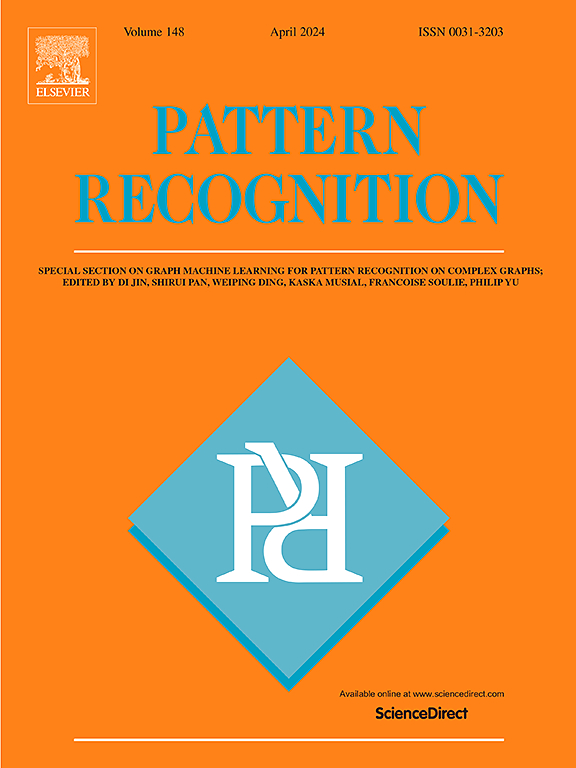GasSeg:用于边缘设备的轻量级实时红外气体分割网络
IF 7.5
1区 计算机科学
Q1 COMPUTER SCIENCE, ARTIFICIAL INTELLIGENCE
引用次数: 0
摘要
红外气体分割(IGS)主要用于识别红外图像中的气体区域,在气体泄漏的预防、检测和响应中起着至关重要的作用。然而,在边缘设备上部署IGS会引入严格的效率要求,并且气体复杂的形状和微弱的视觉特征对精确分割构成了重大挑战。为了应对这些挑战,我们提出了GasSeg,这是一个利用边界和上下文线索实现实时和精确IGS的双分支网络。首先,引入边界感知干,利用固定梯度算子提高浅层的边界灵敏度,促进不同形状气体的高效特征提取;随后,采用由上下文分支和边界引导分支组成的双分支架构,其中边界特征细化上下文表示,以减轻轮廓模糊引起的错误。最后,上下文注意金字塔池模块通过上下文感知的多尺度特征聚合捕获关键信息,确保在微妙的视觉条件下进行稳健的气体识别。为了推进IGS的研究和应用,我们引入了一个包含6,426张图像的高质量真实IGS数据集。实验结果表明,GasSeg在精度和效率方面都优于最先进的模型,达到90.68% mIoU和95.02% mF1,在GPU平台上的实时推理速度为215 FPS,在边缘平台上的实时推理速度为62 FPS。数据集和代码可在:https://github.com/FisherYuuri/GasSeg上公开获取。本文章由计算机程序翻译,如有差异,请以英文原文为准。
GasSeg: A lightweight real-time infrared gas segmentation network for edge devices
Infrared gas segmentation (IGS) focuses on identifying gas regions within infrared images, playing a crucial role in gas leakage prevention, detection, and response. However, deploying IGS on edge devices introduces strict efficiency requirements, and the intricate shapes and weak visual features of gases pose significant challenges for accurate segmentation. To address these challenges, we propose GasSeg, a dual-branch network that leverages boundary and contextual cues to achieve real-time and precise IGS. Firstly, a Boundary-Aware Stem is introduced to enhance boundary sensitivity in shallow layers by leveraging fixed gradient operators, facilitating efficient feature extraction for gases with diverse shapes. Subsequently, a dual-branch architecture comprising a context branch and a boundary guidance branch is employed, where boundary features refine contextual representations to alleviate errors caused by blurred contours. Finally, a Contextual Attention Pyramid Pooling Module captures key information through context-aware multi-scale feature aggregation, ensuring robust gas recognition under subtle visual conditions. To advance IGS research and applications, we introduce a high-quality real-world IGS dataset comprising 6,426 images. Experimental results demonstrate that GasSeg outperforms state-of-the-art models in both accuracy and efficiency, achieving 90.68% mIoU and 95.02% mF1, with real-time inference speeds of 215 FPS on a GPU platform and 62 FPS on an edge platform. The dataset and code are publicly available at: https://github.com/FisherYuuri/GasSeg.
求助全文
通过发布文献求助,成功后即可免费获取论文全文。
去求助
来源期刊

Pattern Recognition
工程技术-工程:电子与电气
CiteScore
14.40
自引率
16.20%
发文量
683
审稿时长
5.6 months
期刊介绍:
The field of Pattern Recognition is both mature and rapidly evolving, playing a crucial role in various related fields such as computer vision, image processing, text analysis, and neural networks. It closely intersects with machine learning and is being applied in emerging areas like biometrics, bioinformatics, multimedia data analysis, and data science. The journal Pattern Recognition, established half a century ago during the early days of computer science, has since grown significantly in scope and influence.
 求助内容:
求助内容: 应助结果提醒方式:
应助结果提醒方式:


